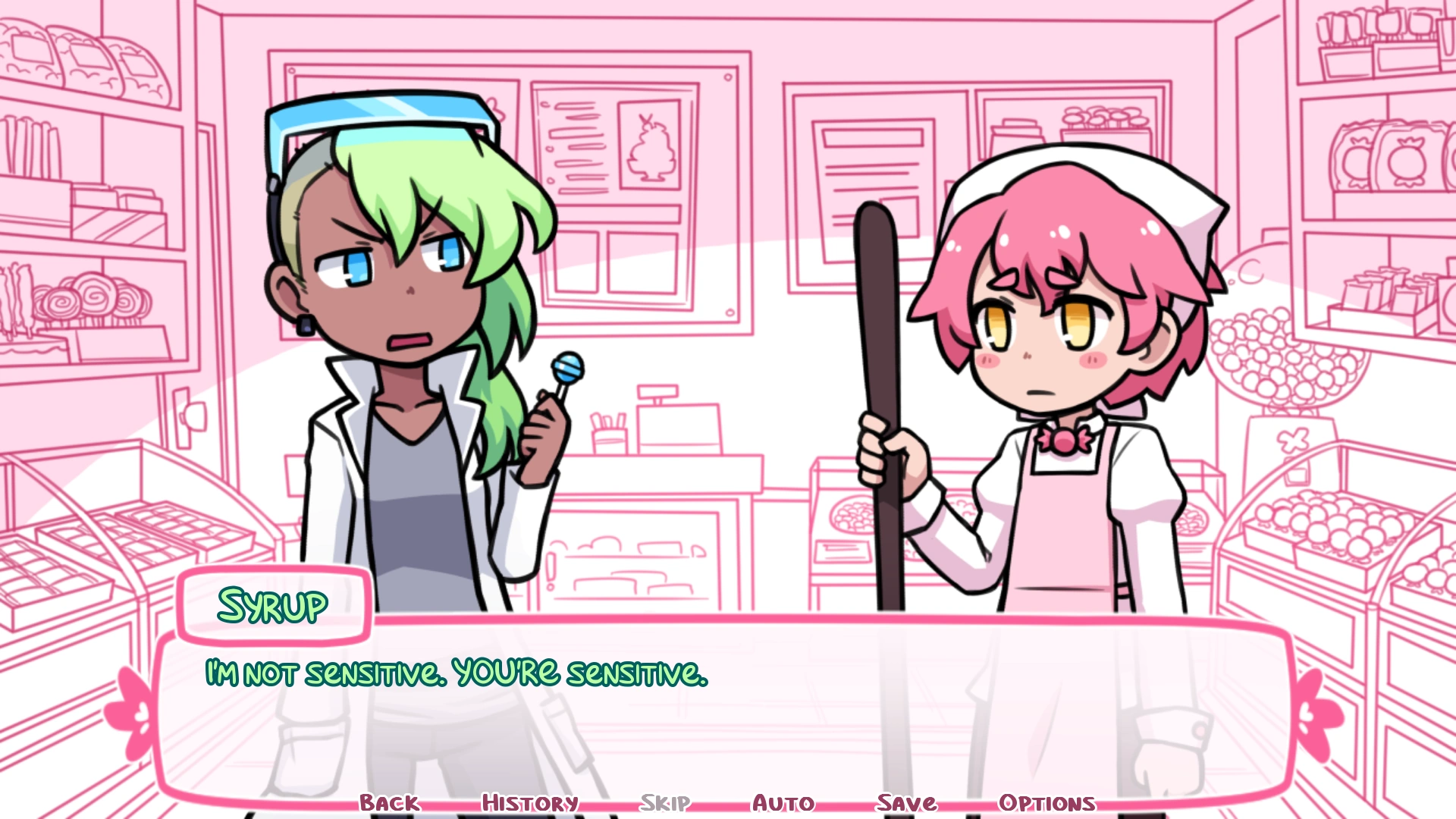
Syrup, other delicious treats, delightful characters, and last but by no means least, alchemy. Syrup and the Ultimate Sweet has it all – even a candy golem! One might be wondering just what it’s doing in a story about a sweet shop, owned by an alchemist, and you better believe its protagonist, Syrup, is more than a little puzzled by its sudden appearance in her basement workshop.
Since her shop is the only one in town selling ordinary, non-magical candies, you’d think such an unusual occurrence would almost be considered the norm, not at all surprising. Perhaps if Syrup wasn’t so far removed from magic, to the point where she considers science to be the superior art, this new arrival might please her. But on top of being stubborn with her beliefs, she’s also not exactly the most welcoming when it comes to strangers – ones that show up unannounced, essentially out of thin air, even less so, for reasons hopefully absolutely obvious. It doesn’t exactly help that the girl keeps asking Syrup to eat her after learning that such is the purpose of candy, the material of which her entire body is made.
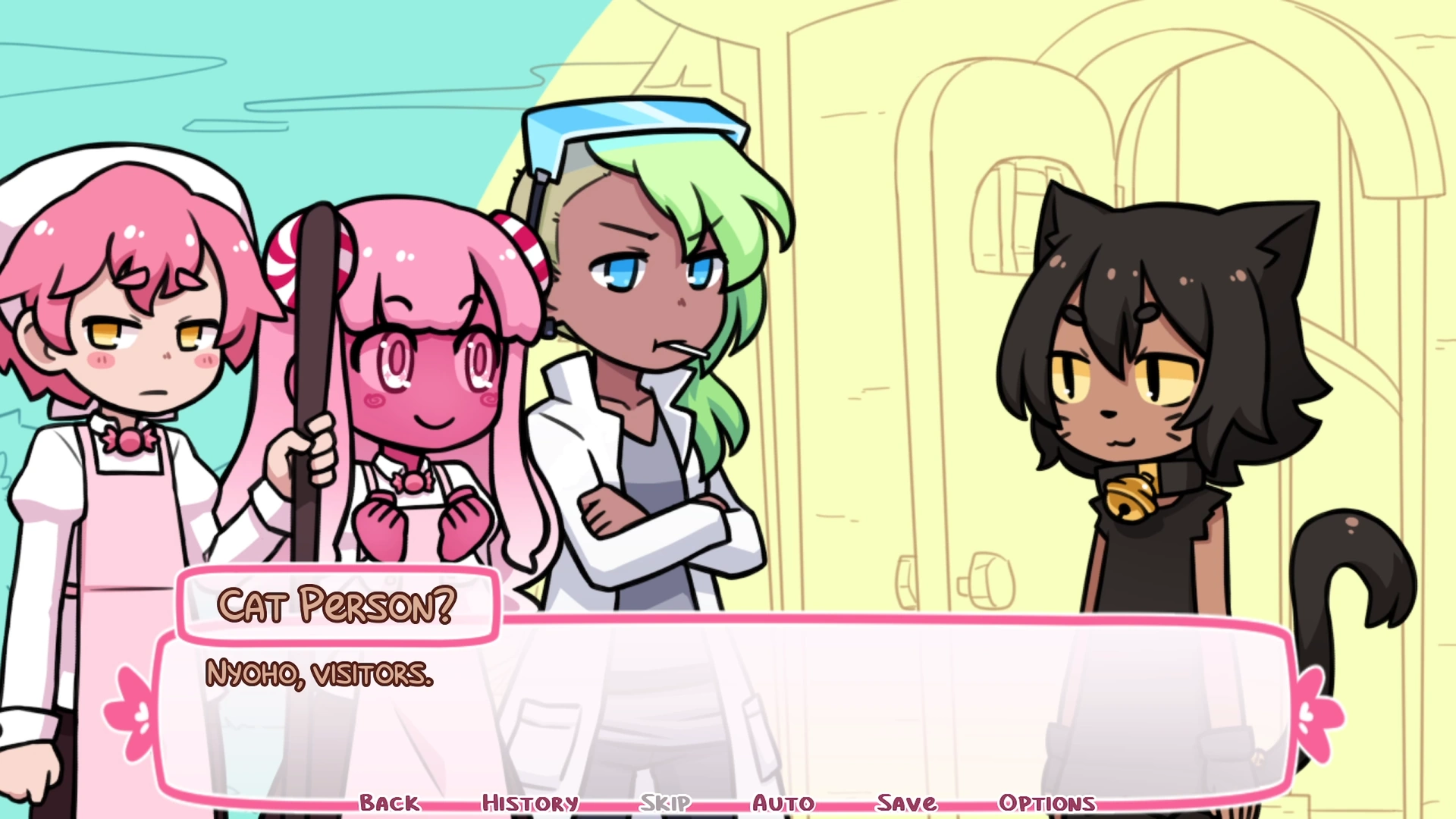
This is probably a good time to mention how Syrup and the Ultimate Sweet has no less than ten unique endings, based not so much on choices made in a typical linear fashion as on the combination as you go along – if that makes any sense. I hope it does because I’m not sure how else to describe the way ‘routes’ are handled here. I did manage to get nine out of the ten endings on my own, but for the last one, I ended up using a guide rather than attempting to figure out the right string of choices to reach that oddly elusive ending.
Anyway, it’s not long until choices start popping up, after which they keep coming at a relatively steady pace. Do you choose to be rude or nice? Help or ignore? Compliment or scold? The vast majority of choices are of a binary variety, presenting the player with only two options, and for something made during a game jam – Yuri Game Jam (2015), specifically – that’s perfectly fine, time constraints and all. I do prefer a branching narrative with a third option, but again, it’s not like NomnomNami had all the time in the world to work on this (if that was even the deciding factor – could simply have been a design choice).
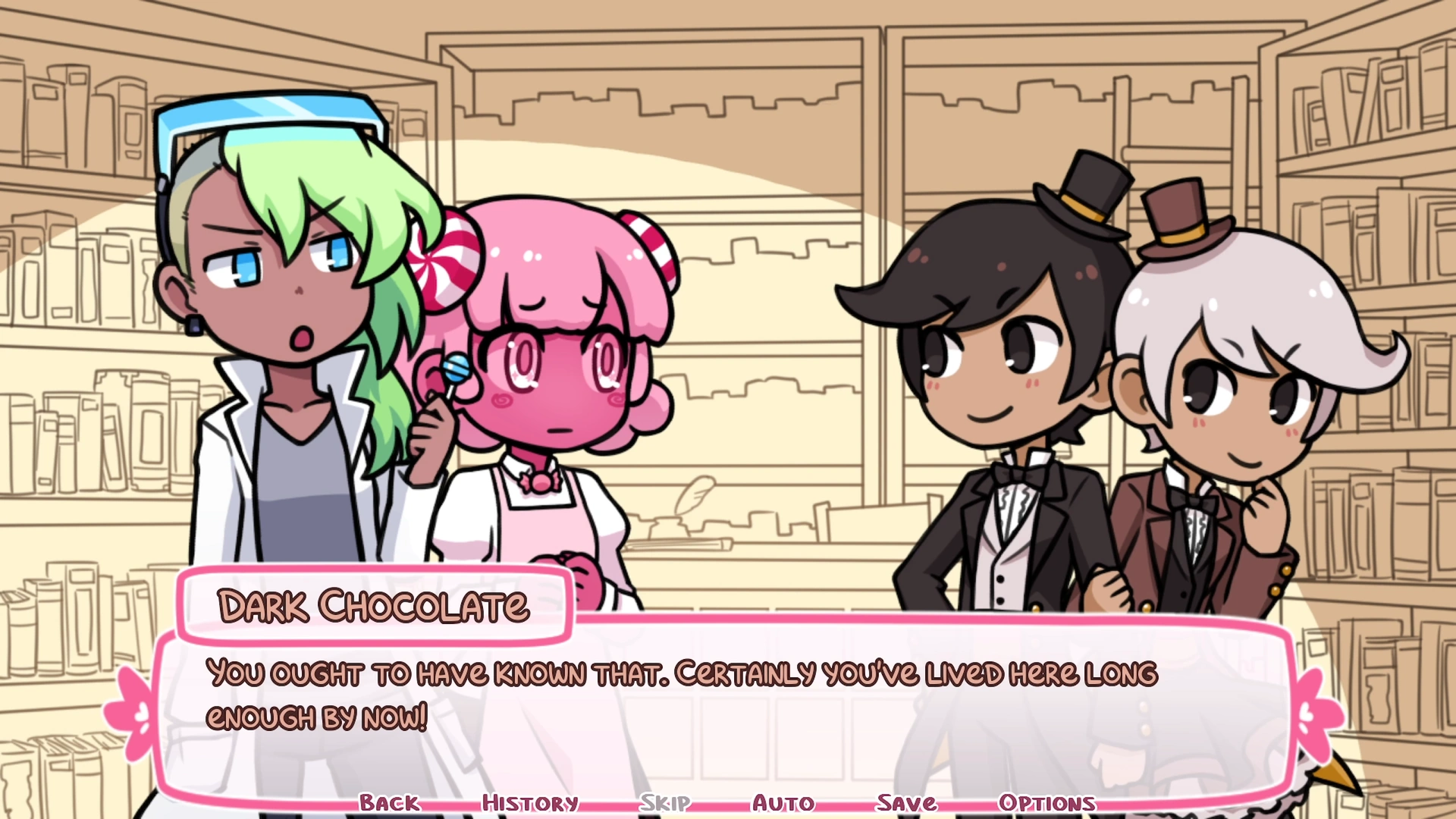
Speaking of dialogue (kinda): I wasn’t entirely sold on the font at first, but it didn’t take long for it to grow on me, and upon realizing the text is coloured to match the person currently speaking, any nitpicks I had with the overall UI design vanished. A small detail for sure, and I doubt most find it overly important, honestly. But with virtually everyone initially defined by something not their name which then changes later, well, it can be surprisingly useful. Vital? Hardly, but useful nonetheless.
That also goes for every single character as even smaller side characters got enough screen time for me to care at least a little about them. Not as much as the main handful of oddballs though, but that’s pretty much to be expected. This is also, in a way, where the branching narrative gets to shine as certain choices lead to additional scenes with certain characters, further fleshing out their personalities, courtesy of additional screen time. Oh, and you better believe some of those ten endings are… bad. In the ‘mistakes were made’ sense, that is, although thankfully it’s all kept nice and clean. No nightmare-inducing conclusions, even if you decide to be as mean-spirited as possible. But you wouldn’t do that, now would you?
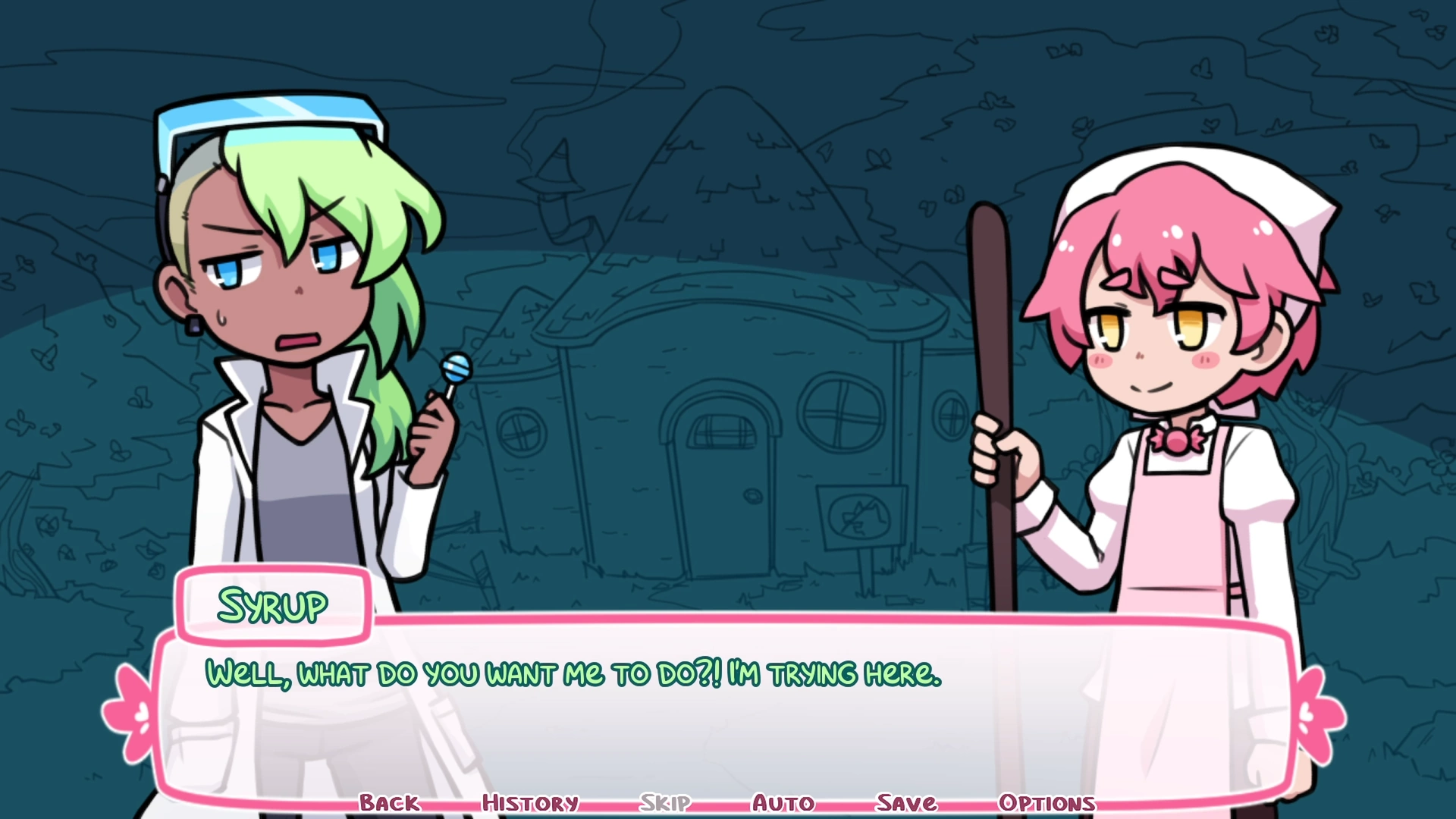
Getting back on track, I did find that after experiencing a few specific endings, going through the story again from the beginning and making different choices almost felt like cheating, in a way. I had after all acquired knowledge about characters and events that Syrup, in a more linear story, should not possess. Sure, events were bound to change unless I picked the same options yet again, but the characters were set in stone, so to speak. It wasn’t something that helped me figure out how to reach a different ending, but seeing one version of an event play out certainly made me wonder just what would happen if this or that could be changed. Which motivated me to seek out every possible outcome, and honestly, it was worth the time and effort.
The adorably colourful art and character designs also undoubtedly elevated my overall enjoyment significantly during the hour or so it took to experience everything in Syrup and the Ultimate Sweet. I mean, just look at Syrup… or Pastille… or Butterscotch… or… well, you get the gist. Everything’s just so bright and cute, almost as if – ah, guess now might be a good time to try and explain the title. Except, no, I’d rather that part be kept a surprise, since it’s so heavily featured in the story. The ‘Ultimate Sweet’ part, that is.
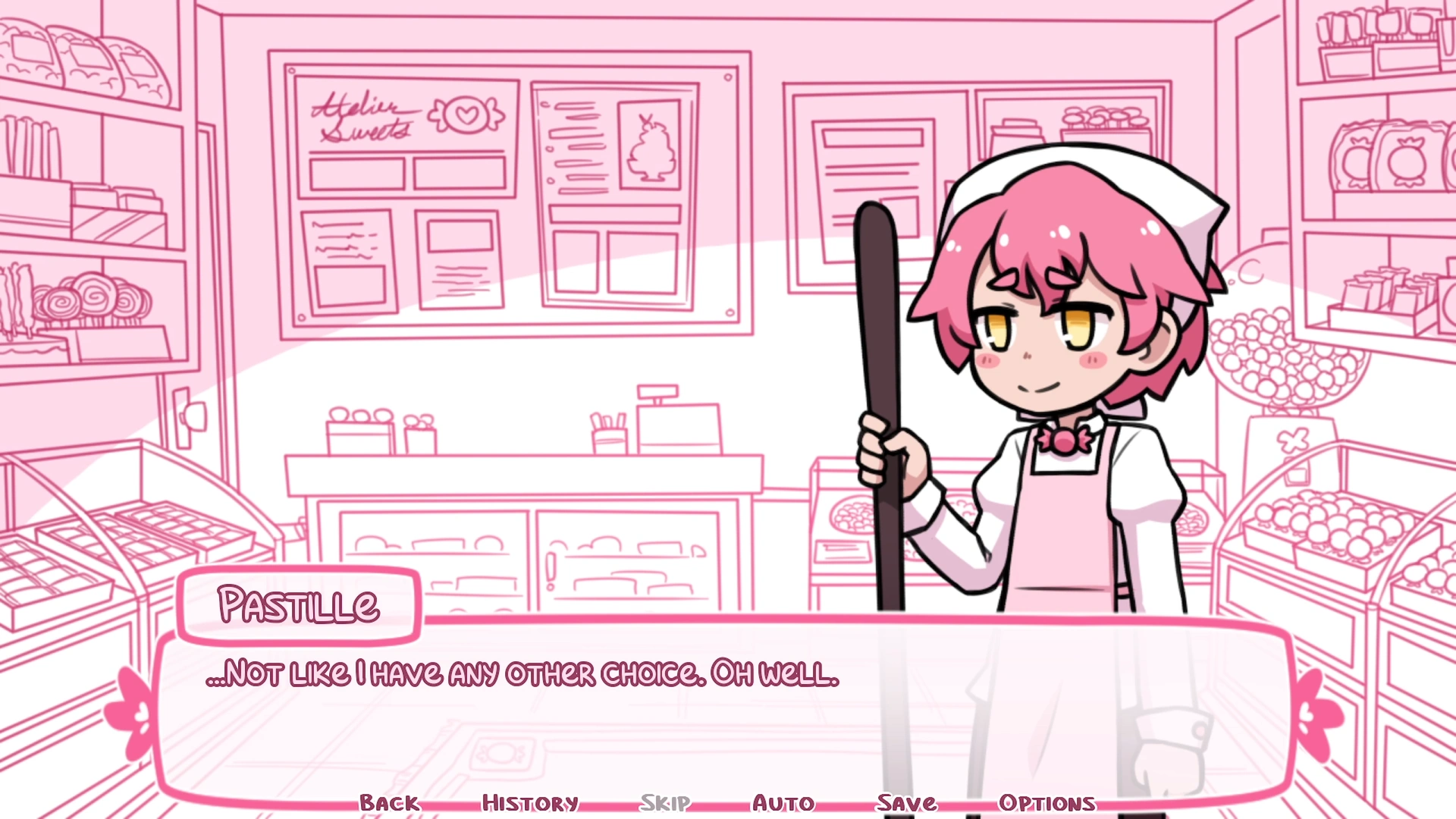
Now, playing/reading this one was something I can only describe as a genuine treat. So much delightfully witty banter from its nicely varied cast that you’d be hard-pressed to point out a dull moment within this visual novel. I’ve already gone over the visual aspect, but mention has to be made of how stylish every ending is; quite a difference from how each character appears in the story itself, and considering those are points at which it comes to an – at times – abrupt halt, it’s rather fitting, too, in that regard.
All in all, a very easy recommendation. Something I’ve hopefully already made crystal clear with almost a thousand words of me gushing over this deliciously candy-flavoured visual novel.
Syrup and the Ultimate Sweet is available on itch.io, PlayStation 4, Switch, and Xbox One/Series X|S.
